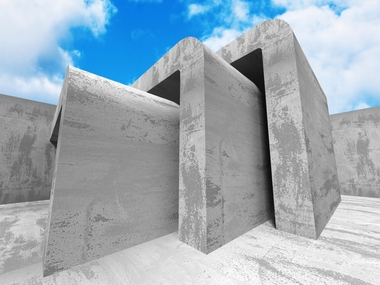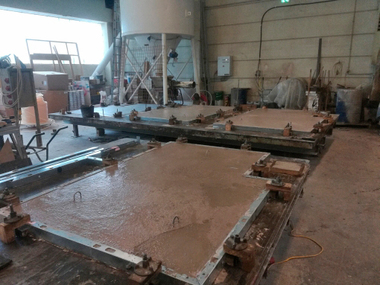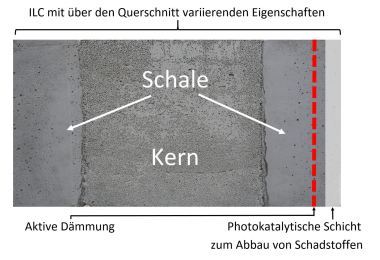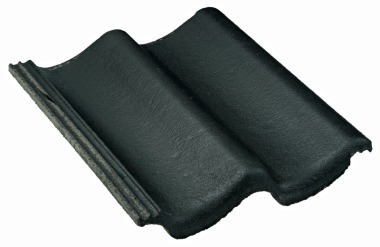Functionalized lightweight concretes with mineral and biogenic aggregates
The Institute for Building Materials in Construction Engineering (IWB) at Stuttgart University studies concretes made of lightweight inorganic as well as organic aggregates. Its research has the objective of providing the future construction sector with lightweight concretes that, in addition to low concrete density, feature favorable thermal conductivity and high concrete strength. The objective is therefore the development of lightweight concretes that are suitable for manufacture of external walls of monolithic construction. As for lightweight aggregate concrete (LAC) with open structure, and with classification of a mean compressive strength of 4 N/mm² in accordance with DIN EN 1520 of strength class LAC 2, the objective here is to develop lightweight concretes with a mean strength of at least 4 N/mm². These are, accordingly, suitable for manufacture of wall elements. Inspired by the efficiency and appeal of infra-lightweight concretes [1], Dr. Agnes Schliesser, within the scope of her dissertation [2] based on various preliminary studies, focused on structural and heat-insulating lightweight concretes in which a great variety of lightweight inorganic aggregates [3] were used – as well as organic aggregates such as wood chips [4,5] – to enable manufacture of lightweight concrete with a minimum of weight, a maximum of thermal insulation and with sufficient loadbearing capacity for structural use, in manufacture of monolithic wall elements.
Dr. Agnes Schliesser has succeeded in developing a warm concrete with a design thermal conductivity of 0.125 W/(m·K) at a dry density of 480 kg/m³ and a compressive cylinder strength of 4.9 N/mm². With this warm concrete, it is possible to manufacture monolithic wall elements with a U-value of 0.28 W/(m²·K), and with wall thickness of only 42.5 cm. In addition, this concrete can also be executed in architectural quality. One of the challenges was to manufacture the lightweight-concrete mix not only to laboratory scale, but with real-scale mixing batches and to use it to manufacture construction elements in architectural quality. Dr. Schliesser was able to demonstrate this with impressive results. Current research follows up on this project and focuses on plant engineering developments within the scope of an ongoing joint program for small and medium-sized enterprises (SMEs).
Here, together with industry partners, a mixing system with batches of more than 500 liters is being developed and also adjusted to manufacture high-performance warm concrete [5]. The warm concretes manufactured with these mixes are intended for construction of real-scale model structures in the form of large-sized modular components or in-situ casting to demonstrate the enormous potentials of the multi-functional high-performance of warm concrete.
Acknowledgment
The author thanks all those staff members with whom he was able to discuss the manufacture of lightweight concretes with closed and open structure, as well as the manufacture of foam concretes. Special thanks go to Dr. Agnes Schliesser who within the scope of her dissertation devoted herserself with extraordinary commitment and with great thoroughness to warm concrete. She achieved impressive results whose large-scale manufacturability she well documented. Dr. Baumert as well as Mr. Nitsche and Mr. Lazik who currently concern themselves with large-scale production of warm concrete by identifying and optimizing suitable mixing processes and process procedures. The objective of the ongoing work is the manufacture of these challenging high-performance concrete mixes of constant uniform consistence and processability in real-scale quantities to enable implementation in practice.







